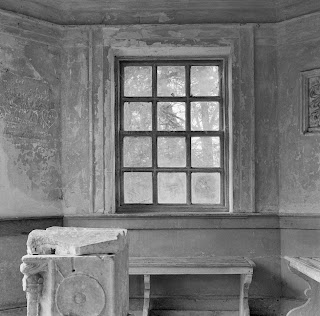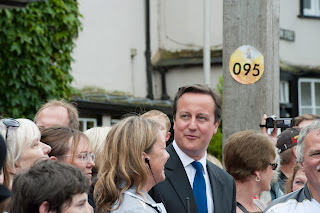A long time ago, it seems now, I was
sitting and reading in the foyer of a antiquated city centre hotel in Santiago.
The book was “Great Expectations”. I wanted the taxi that was take me from the
hotel to an office by the ocean to be late as I was nearing the end, but this
was not long after Pinochet and order was still the order of the day and the
taxi driver was on time. There were still a few pages left, which I would read at
the airport, but I knew the ending as I had read the introduction. The
introduction to the Penguin classic edition not only told me what the ending
was, but also what the original ending was – much bleaker, much tougher and
Dickens was talked out of it by friends, so not only did I know what the ending
was I also knew what wasn’t the ending. I vowed thereafter to never read
introductions or prefaces to any book I read until after I had read the book it
was introducing.
The word that came to my mind, as I looked
through the photographs in this wonderful little book, kindly loaned to me by Catherine Banks, a fellow student, was transformative, so I was interested to find that in the
short introduction that I read, after I had looked and studied the three score
and more reproduction photographs, the word “transformative” as a key
descriptor in the analysis provided.
Where I agree with Robert Gurbo, in his
preface to the new edition of Andre Kertesz’s “On Reading”, is in his use of
the of the word “transformative” when he describes the power of the written
word that provides the central motif of the sixty six duotone prints contained
in this beautiful little book. The written word that features as a sur-text on
each of the photographer’s works that, as Gurbo informs us are better
reproductions is this edition than the previous editions due to the improvements
in print technology. And, whilst the subject of each photograph reflects the
title and most of the photographs are of persons or people reading, it is here
where I think Gurbo doesn’t go quite far enough.
Kertesz the son of a bookseller in
Hungary wasn’t an accomplished oral communicator, whilst he lived in France for a period after he left Hungary he hardly spoke the language - so he needed to rely on his visual language, the
photographer preferred to let his images provide the narrative on the life that
he led. Roland Barthes said of Kertesz that he he produced "a photography that thinks"in the preface to "Kertesz - Michael Frizot/Anne-Laure Wanaverbecq, Jeu de Paume reviewed here. I agree with Barthes, these photographs provoke thought as much as they are about thought.
It is easy to imagine short essays on each
of these images, such is their individual strength but put together as they are,
their collective energy is more than the sum of their parts. For this viewer of
these photographs it is the transformative power of the idea and their concomitant thoughts that resonate individually and collectively throughout this book. Words seem to me to be the sub-text in these pictures, fluency in different languages allow different interpretations of words and whilst there is the visible written word in many of the photographs it is the ideas expressed in them that matters. None more so than "New York City, July 30, 1969"; a photograph of a large beetle on the book cover of the complete works of Voltaire whose ideas helped shape the Enlightenment and some of the great thinkers from the late eighteenth century to this day.
One of the early shots has two
students with their backs being supported by the same tree in “Washington
Square, April 18th 1968”. Precisely a week after the Civil Rights
Bill was passed into statute by Congress, Kertesz takes a picture of two
students; one white and one black. Two students united by the foundational
solidity of a tree routed in the soil of the United States of America, but also by
concentrated thought as they regard, each of them, the written word. It is the
compositional idea of the shot that exposes an idea of an idea stemming from
the subjects that defines the beauty of this photograph.
The last photograph “Hospice de Beaune,
France, 1929” has an elderly matriarch sitting up in bed, wrapped against the cold
with a shawl and headscarf, she reads with obvious intense concentration. The
subject’s pillows are bolstering her in her pursuit of more words and ideas to
the almost exclusion of life itself. This photograph has the subject looking in
towards the spine of the book, regarding all that has been printed before. And
when she has finished reading there is a bell pull above her that she can
inform of her decision to stop reading once and for all.




















































